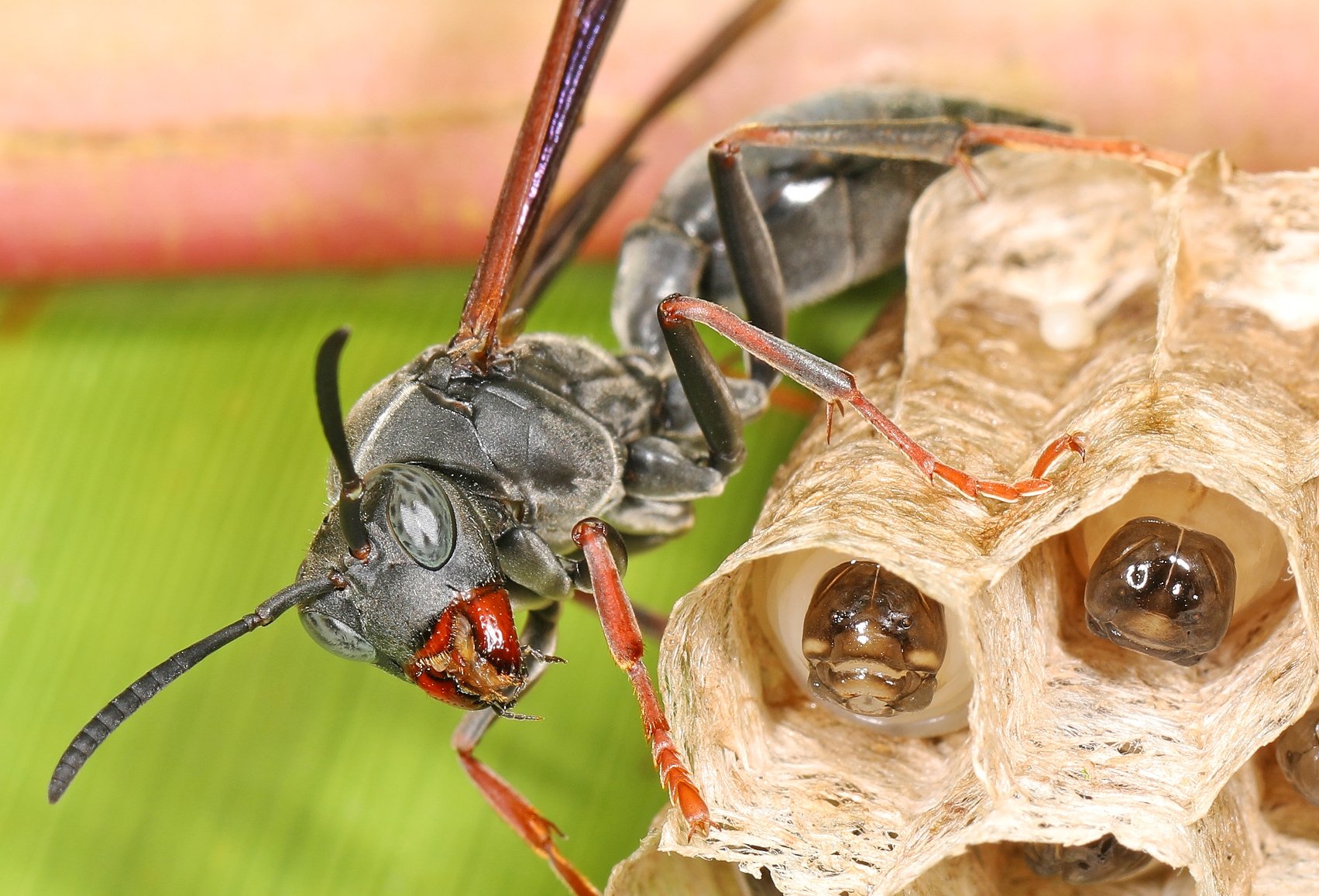Photo: Metricus Paper Wasp with wood fibers in her mouth, Judy Gallagher
Judy Gallagher is an ASNV board member and a regular surveyor of local wildlife who also captures photos of what she sees, in particular the less common species.
It's late autumn and you're sitting on your deck, beverage in hand, enjoying the unseasonably warm fall day. What could possibly mar this occasion, other than the swarm of yellowjackets that want to join your party? You would be forgiven for wondering why social wasps should exist, yet they are very important to a healthy ecosystem.
There are more than 100,000 worldwide wasp species, but only about 1000 of them are social wasps. Social wasps, which include yellowjackets, hornets and paper wasps, live in colonies with a queen and anywhere from dozens to thousands of sterile female workers who gather food and defend the nest, and males, whose only job is to mate with the queen.
Metricus Paper Wasp with wood fibers in her mouth, Judy Gallagher
Social wasps nests are constructed of paper cells. The worker wasps collect wood fibers, then mix them with water to form sort of a papier mache.
Hornet nest in tree at Occoquan Bay National Wildlife Refuge, Judy Gallagher
Hornets and Yellowjackets construct huge nests and the individual cells are not noticeable. Most yellowjackets construct their nests underground, but they can also build nests in trees or buildings.
Paper Wasp with larvae, Judy Gallagher
Paper wasp nests look a little different. You can see the individual cells, and if you dare to get close enough, you might see the larvae inside each cell.
Metricus Paper Wasp at Dyke Marsh, Judy Gallagher
Paper wasp nests can be almost anywhere: this one (above) was right above the door to the Lady's Restroom at Dyke Marsh in Alexandria.
Guinea Paper Wasps, Occoquan Bay National Wildlife Refuge, Judy Gallagher
But this is a more typical view of a paper wasp nest (above), showing just how many workers there typically are.
Eastern Yellowjacket eating a Black Swallowtail caterpillar, Judy Gallagher
Adult social wasps collect protein to feed the larvae. This is one of the important roles they play in the environment - they keep other insects in check. The wasp adult macerates the captured insect and feeds the resulting insect paste to the larvae. The larvae converts the protein into carbohydrates and secrete sugary wastes that feed the adults. But when the larvae have become adults, the worker wasps no longer have this food source, so they search for nectar and yes, your beverage or sweet foods that you are eating outside.
German Yellowjacket with pollen, Judy Gallagher
As social wasps nectar on flowers, they accumulate pollen and when they visit the next flower, they pollinate it. So the next time you are bothered by social wasps, please consider the valuable roles they play in our environment and give them a break.
View all of Judy’s Observations from Meadowood articles here.








